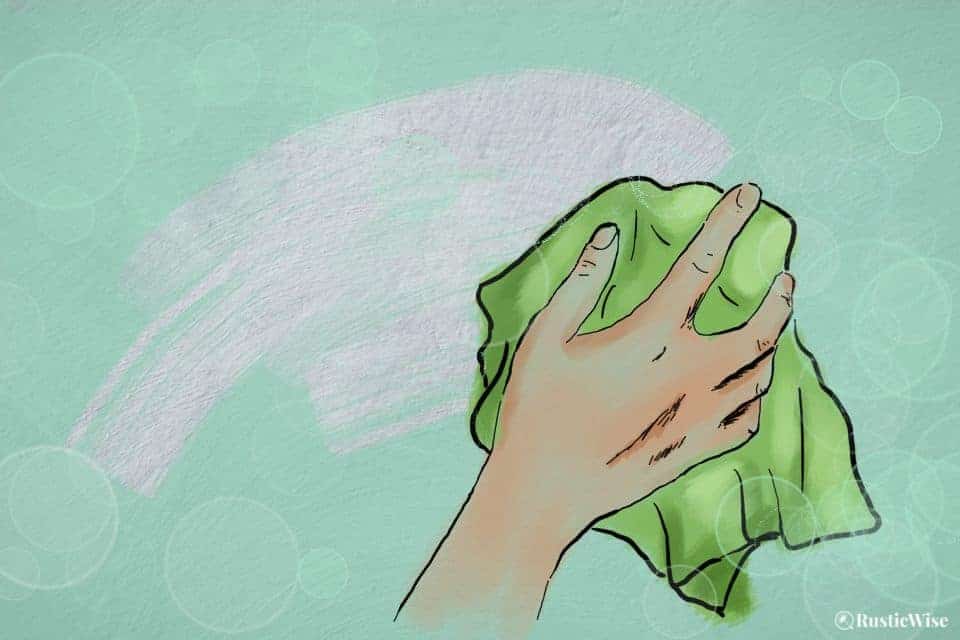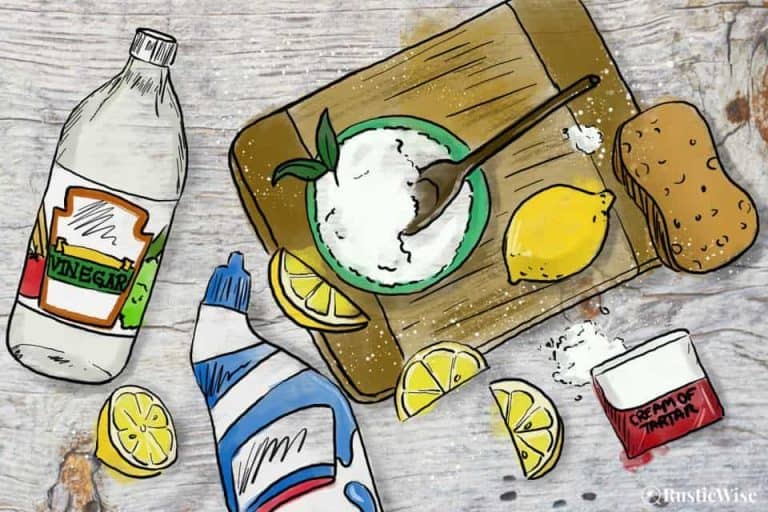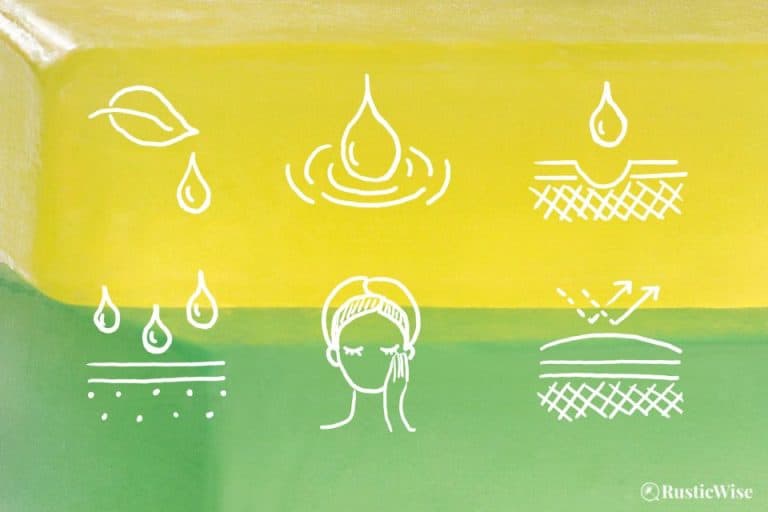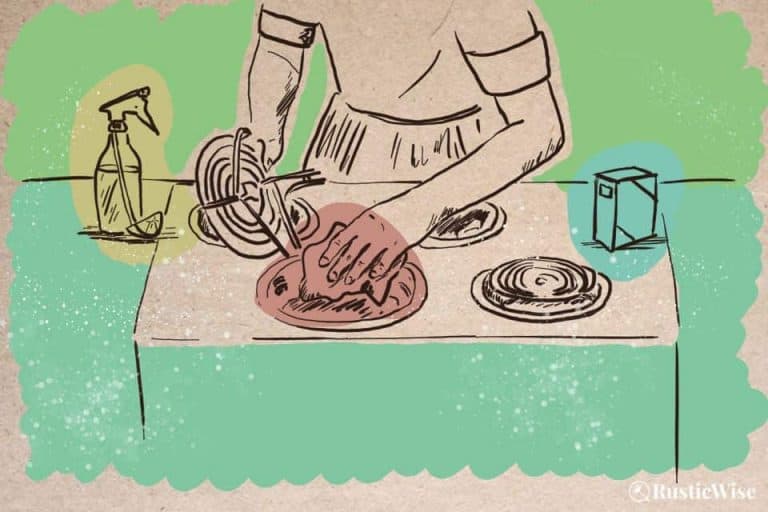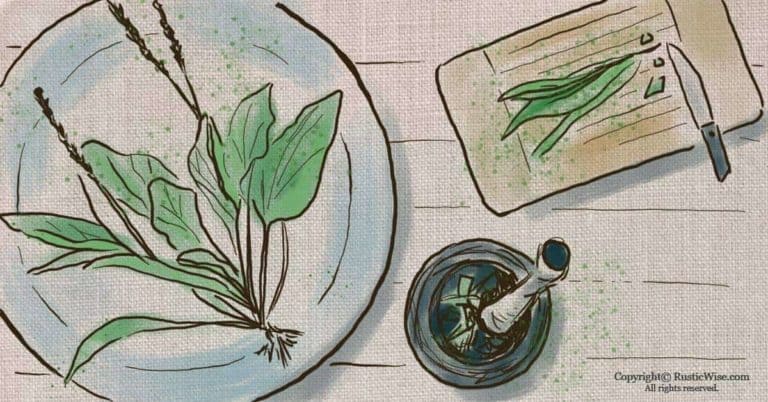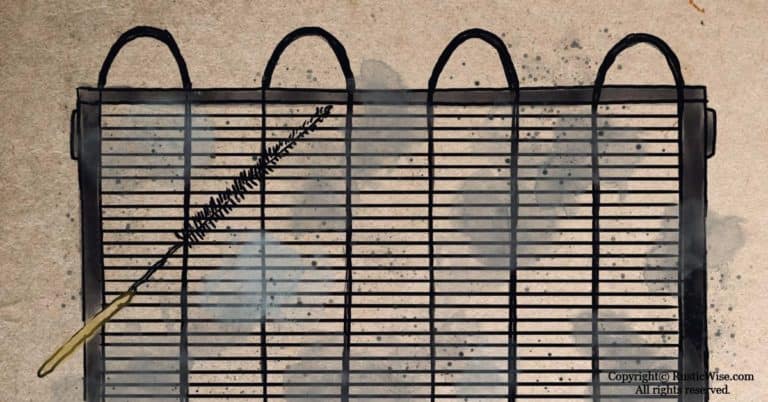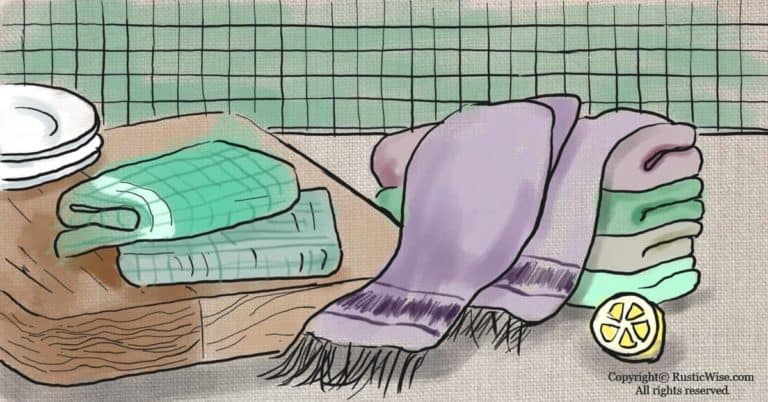Does Sugar Soap Remove Paint? No, but You Should Still Go Easy
RusticWise is supported by its readers. When you purchase through links on our site, we may earn an affiliate commission. As an Amazon Associate, we earn from qualifying purchases. Thank You!
Proper prep work lays the foundation for success with any home renovation or DIY project. To achieve a smooth and consistent paint finish, it’s all about working on a clean and dry surface.
Sugar soap is a popular cleaner that removes built-up dirt, grime, grease, and nicotine.
Does sugar soap remove paint? Most commercial sugar cleaners are marketed as safe for painted surfaces, including walls and cabinets, and should not damage the surface of the paint. However, it’s best to avoid using abrasive sponges when cleaning and to avoid scrubbing too hard. As a paint remover, sugar soap provides lack luster results.
Keep reading for more tips on how to use this powerful cleaner to achieve a flawless finish!
What is sugar soap for cleaning walls, exactly?
Sugar soap is a powerful cleaning agent that can be applied directly to surfaces to clean them. It removes dirt, tough stains, greasy residue, and nicotine from hard surfaces.
It also brightens painted surfaces, making dull, dingy walls look fresh again. (Using a sugar scrub is a lot easier and quicker than repainting an entire wall if you’re short on time.)
Named after its similar appearance to granulated sugar crystals, it actually doesn’t contain any sugar. You can buy sugar scrub at many hardware stores.
If you haven’t heard of sugar soap, chances are that you may live in North America, where this type of cleaner isn’t very common. Sugar soap is popular throughout Europe and Australia.
In Canada or the U.S. a similar type of cleaning solution is TSP (trisodium phosphate).
Safety note: This strong cleaner is toxic and can cause irritation to your eyes and your skin. It’s highly recommended to wear protective gloves and safety glasses.
When should you use sugar soap?
There are times when a mild soap will do. Then there are times to break out a heavy duty cleaner. Here are a few ways to use this sugar scrub:
- Prep walls or surfaces for painting: Preparation for painting often takes longer than the actual painting itself. To get optimal paint adhesion, this scrub can help get walls or other hard surfaces in tip-top condition.
- Refresh dingy walls: With regular wear-and-tear (think fingerprints or smudges), many once bright walls look worn down. If your paint is still in good condition, a quick once-over with this cleaning solution can do wonders.
- Remove nicotine stains: Yellow stains on walls? This cleaning solution can help you remove nicotine marks on walls. While it might not make walls completely nicotine-free, it prevents unsightly stains from carrying over to a new layer of paint.
- All-purpose cleaner: Grease (and its friends, oil, and fat) are no match for sugar scrub. Many people like to use this cleaning agent in areas prone to greasiness, such as kitchens. Kitchen cabinets, backsplashes, and even some types of flooring could benefit from a quick wash.

Does sugar soap remove paint?
Generally, no, sugar soap does not remove paint. If you were hoping to use it as a paint remover, you’re better off using a special paint stripper.
But, if you’re looking to prep walls and other surfaces before painting, sugar soap is effective at removing built on grime, grease, and nicotine (yellow or brownish) stains. Most commercial sugar soaps say they are safe to use on painted surfaces.
It’s important to tread lightly. As this substance is a powerful alkaline cleaner, too much scrubbing, scrubbing too vigorously, or using an abrasive cleaning tool could damage painted surfaces.
Some makers of sugar soap do NOT recommend using their products on certain types of paint. Selleys, a popular manufacturer of sugar soaps, does NOT recommend using their wipes product on matte paint or ceiling paint.
But, really, can you use this scrub to remove paint?
If you’re in a bind, you may have luck removing a splash of paint on some plastic surfaces. Or, it can work to remove paint from already peeling wooden surfaces. (This includes water-based paints, acrylic, or latex paints.)
Types of sugar soap for cleaning
There are four main types of sugar soap for cleaning walls and surfaces. They all have the same cleaning properties, but come in different forms.
Most soap powders and liquids are in concentrated form. You’ll need to mix them in warm water before using.
- Powdered soap: The OG sugar soap, and the source of its name. This stuff looks like granulated white sugar, but packs a cleaning punch!
- Liquid concentrate soap: Some prefer to stay clear of the powdery stuff and opt for concentrated liquid soap instead. Everbuild Sugar Soap Liquid can make up to up to 14 liters of liquid soap from a 16.9 ounce (500 mL) bottle.
- Wipes: These pre-moistened wipes are a convenient way to apply sugary cleaning power without having to pre-mix anything. Selleys Sugar Soap Wall & Surface Wipes come with a textured side for added scrubbing power.
- Ready to use/pre-mixed soap: While you don’t have to mix anything, this type of readymade soap provides less bang-for-your-buck.
What’s in sugar soap?
The ingredients found in this powerful alkaline cleaning substance differ from manufacturer to manufacturer. Generally, you can expect to find the following common ingredients in most commercial scrubs:
- Sodium carbonate (aka washing soda): Used as a water softener and helps to break down soils.
- Sodium phosphate: Acts as a “builder” or chelator by preventing hard water minerals (such as calcium and magnesium) from binding to surfactants.¹
- Sodium silicate: Helps remove corrosion.
Note: If you don’t like the thought of using harsh cleaners, you can check out our homemade sugar soap for walls recipe.
What’s the pH of sugar soap?
Sugar soaps are alkaline, meaning they have a pH above 7.
As a quick refresher, the pH scale runs from 0 to 14, with pH 7 being neutral. Acidic solutions are those with a pH below pH 7, while basic or alkaline solutions have a pH above 7.
For example, Everbuild’s Sugar Soap Liquid has a pH between 10 to 10.5.²
Soaps are alkaline. This includes hand washing soap, liquid dish soap, and sugar soap. Alkaline cleaners are ideal for cutting through grease, removing baked on food particles, lifting caked on dirt, and absorbing odors.
Tips for using sugar soap
- Test a small area first: Before covering a whole wall with powerful soapy suds, test out an inconspicuous area first. While generally safe to use on painted surfaces, some types of paint (matte paint, for example) are more susceptible to damage.
- Go easy: To avoid damaging cabinets, walls, or furniture, avoid scrubbing too hard. I have actually discolored a few painted walls when using TSP and scrubbing too long in one area.
- Don’t forget to rinse: When using any type of sugar soap, remember to rinse well to remove any soapy residue. This is an important step—don’t skip it! If you skimp on the rinsing step, you may find yourself with a splotchy paint job.
- Wear gloves and eye protection: The last thing you want is to get a splash of chemicals in your eye, so cover up! You’ll also want to wear a pair of protective rubber gloves.
- Mop up spills: It’s important to clean any spills immediately to prevent staining or discoloration.
How to use sugar soap for walls
- Prepare work area by moving furniture away from walls and removing any hanging picture frames. Set up a drop cloth to protect flooring.
- Put on safety gear.
- Mix soap solution with warm water (follow instructions on the bottle for water to cleaner ratio).
- Use a soft lint-free cloth and immerse it in the cleaning solution. Squeeze out excess water.
- Clean the wall with the damp cloth. Work section by section.
- Rinse off any soapy residue using a clean cloth and warm water.
- Allow to air dry.
Related questions
Does sugar soap need to be washed off before painting?
Yes, it’s best to rinse off soapy residue with warm water and a soft cloth. This helps remove any sugar soap residues which might interfere with paint adhesion.
How long after sugar soaping can you paint?
For best results, let the surface get 100 percent dry. This can take anywhere from 2 to 4 hours depending on how damp the surface is, room temperature, and humidity. If you’re itching to start your painting project, you can help speed up drying time by using a dry cloth to blot wet areas.
Is washing soda the same thing as baking soda?
No, while washing soda and baking soda are extremely similar in look and feel, they are NOT the same. Washing soda (sodium carbonate) is a strong alkaline powder, while baking soda (sodium bicarbonate) is gentle and mild. Both are mineral salts.
When using washing soda, it’s important to wear proper safety gear as it can irritate skin, eyes, and the respiratory system (if inhaled).
Baking soda is a common ingredient used for baking and cooking. It’s also a great natural cleaner. You can also find it in personal hygiene products, like toothpaste.
👉 If you like this post, see other Timeless Cleaning Tips You Need To Know. 🌟
Would you like more timeless tips via email?
Fun tips to help you live an independent, self-sustaining lifestyle. Opt-out at any time.


References
- American Cleaning Institute, Glossary of Cleaning Product Terminology, https://www.cleaninginstitute.org/understanding-products/how-read-labels/glossary-cleaning-product-terminology. Accessed September 2022.
- Sika UK, Everbuild Sugar Soap Liquid Product Data Sheet, https://gbr.sika.com/dms/getdocument.get/c3c85a51-b56e-43c5-90cb-09752f8e16f2/everbuild_sugar_soapliquid.pdf. Accessed September 2022.

Author: Josh Tesolin
Josh is co-founder of RusticWise. When he’s not tinkering in the garden, or fixing something around the house, you can find him working on a vast array of random side projects.

